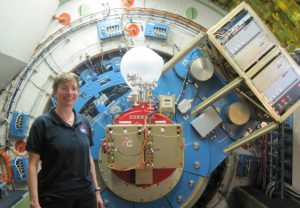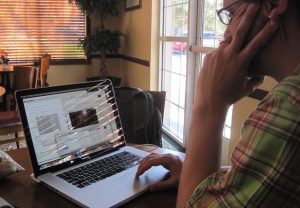Reposted from https://blogs.nasa.gov/mission-ames/2013/05/21/post_1369126163898/.
Tonight’s line operations were cancelled due to open issues recertifying work on reworked parts of the telescope assembly (TA) power subsystem. There are no show-stoppers, just the need for more time for testing and integration. Progress continues to be made. The cautious step was to make the decision to start line ops tomorrow, and there is a contingency day next week to make up time if needed. The schedule for the remaining three nights of line ops will remain tight, but there is a plan. Creative re-ordering of tasks will be the “philosophy” these next three days. Having worked operations on two space missions, I can say that operations of any craft, air or space, is a skill of “firm flexibility.”
This evening, I experienced a Technical Readiness Review(TRR). This consisted of getting all the leads around a table and walking through the status of each subsystem, who is needed where and when, what types of testing will be done during the next few days, and when the daily crew briefings will be held. Also addressed were questions posed by the visiting science team to the operations team, to fill in some gaps. Today was the first time the group had re-assembled since the last line & flight ops, which for the FORCAST instrument, had been back in March. Since then, two other instruments (HIPO/FLITECAM and GREAT) had been installed, tested, and removed,and there have been software upgrades to both the telescope and telescope to science instrument communications. This phase of operations is pretty complex,folding in highly dynamic items that may seem be changing a lot, but it’s actually normal. And the job of operations is to keep to schedule while still achieving the tasks. Sometimes the path is different from the exact original concept, but if the goals are met, it was a successful journey. At tomorrow’s crew briefing at 2130h, open items from today’s TRR will be addressed and closed before line ops begins, set for 2300h-0500h.
I’m still a bit on the sidelines, watching and learning from the experienced SOFIA observers who have worked with SOFIA operations before. During a lull this afternoon, I got a glimpse into the AORs, or AstronomicalObservation Requests, which is how an end-user communicates her requests to enable an observing plan via scripted observational tasks. The AORs for our upcoming line ops have been written, and one of my roles will be quick look data analysis to confirm they executed as expected. My colleague Luke Keller, from Ithaca College, is shown below crafting some new slit-stepping observations.
Oh, I got to step inside SOFIA today. She’s bigger on the inside (compared to what I had expected, that is.).

